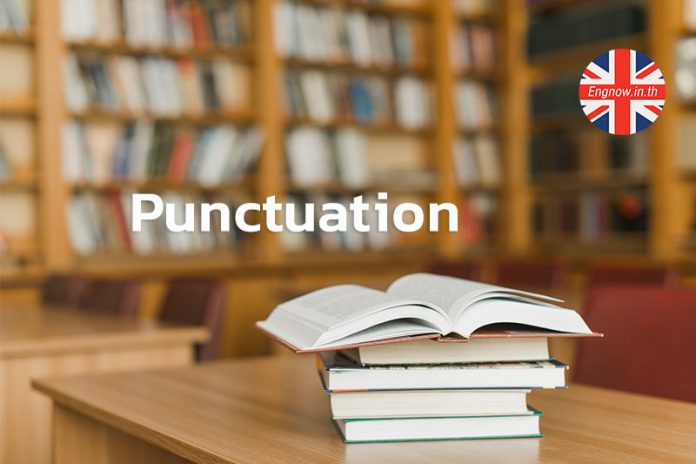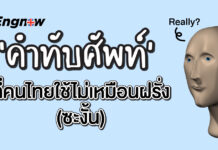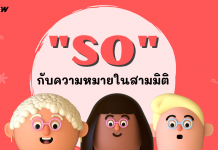เครื่องหมายวรรคตอน (Punctuation) เป็นเครื่องมือของภาษาเขียนที่จะช่วยแบ่งประโยคให้เข้าใจได้ง่ายขึ้น เครื่องหมายวรรคตอนมีต่อไปนี้
1. Full Stops (British English) หรือ Periods (American English) ( . )
-ใช้เมื่อจบประโยคในประโยคทุกประโยค ยกเว้น ประโยคคำถาม ประโยคอุทาน เช่น
- Good morning.
- I love you.
-ใช้หลังอักษรย่อต่างๆหรือคำย่อ เช่น
- Dr. = Doctor
- Mr = Mister
- M.A. = Master of Art
- U.S.A. = United states of America
2. Comma ( , ) หรือ เครื่องหมายจุลภาค/เครื่องหมายลูกน้ำ
– ใช้แยกบันทึกรายการต่างๆ หรือคำกลุ่มเดียวกันเช่น
- At the party we had cakes, jellies, chocolate, and ice cream.
- I want a car, a motorcycle, and a bicycle.
สังเกตได้ว่าจะมี (,) วางไว้หน้าคำว่า and
– ใช้เพื่อแยกข้อความในประโยคคำพูด เช่น
- He said, “They are happy.”
- ‘Tell me’, I said, how you know all that.
– ใช้แยกประโยคที่ตามหลัง Yes, No และ Well ที่ขึ้นต้นประโยค เช่น
- Are you Chinese? Yes, I am.
– ใช้แยกประโยคที่ตามหลัง ในที่ที่ต้องการให้หยุดพักการอ่าน เช่น
- If you will help me, I will help you.
– ใช้คั่นเพื่อแยกคำนามซ้อน เช่น
- Thailand, a country in Asia, is famous for its beautiful temples.
– ใช้แยกคำที่เป็นชื่อเรียกของคน เช่น
- Mary, Are you OK?
- Chen, where have you been?
- What would you like to eat, Lisa?
– ใช้แยกคำคุณศัพท์ที่บอกสี เช่น
- a blue, yellow car
– ใช้แยกคำคุณศัพท์ที่ตามหลังคำนาม เช่น
- My girlfriend is slim, tall, and beautiful.
– คั่นระหว่างปีที่ตามหลังเดือน, ถนนกับเมือง, เมืองกับประเทศ เช่น
- Today is May 4th, 2008.Tang lives at 76 Satorn Road, Bangkok.
– ใช้แยกคำหรือวลี เช่น however, therefore, of cause, for instance, etc.
3. Question Mark ( ? ) หรือ เครื่องหมายปรัศนี
ใช้กับประโยคคำถามเท่านั้น ใช้ในประโยค Direct question เท่านั้น ไม่ใช้ในประโยค Indirect question เช่น
- How are you?
- What’s your name?
- Direct : I said to him “when are you going to Thailand?”
- Indirect : I ask him when he was going to Thailand.
4. Colon ( : ) หรือ เครื่องหมายมหัพภาคคู่/เครื่องหมายทวิภาค
– Colon ( : ) มีความหมายคล้ายกับคำว่า กล่าวคือ
– ใช้ colon ก่อนการประโยคอธิบาย เช่น
- We have two choices: work hard or fail.
-ใช้แจ้งรายการหรือรายละเอียด มักใช้ตามหลังคำ the following หรือ as follows เช่น
- I want the following items: eggs, sugar, and flour.
5. Semi-colon ( ; ) หรือ เครื่องหมายอัฒภาค
– ใช้คั่นประโยคที่มีเครื่องหมาย comma คั่นอยู่แล้ว เช่น
- Hello, Nan; Please come here.
– ใช้ทำหน้าเพื่อเชื่อมประโยคสองประโยคที่มีเนื้อหาเกี่ยวพันกันวางไว้หน้า adverbs ได้แก่
therefore (ดังนั้น) besides (นอกจากนี้) เป็นต้น เช่น
- Canada is very cold; therefore people must wear heavy coats in the winter.
-ใช้เชื่อมประโยคสองประโยคที่ไม่มีคำเชื่อม และทั้งสองประโยคมีความหมายเกี่ยวเนื่องกัน เช่น
- Jen eat fried rice; Ken eat noodle.
6. Exclamation Mark ( ! ) หรือ เครื่องหมายอัศเจรีย์ ใช้หลังคำอุทานหรือประโยคอุทาน เช่น
- Hey! Please aware your step.
- Oh! I miss you.
- It is cold!
7. Apostrophe ( ‘ ) หรือ เครื่องหมายวรรคตอน
– ใช้แสดงความเป็นเจ้าของของคำนามทั้งนามเอกพจน์และนามพหูพจน์ เช่น
- My sister’s car, John’s home.
– ใช้แสดงความเป็นเจ้าของของคำนามพหูพจน์ที่เติม s หรือชื่อเฉพาะที่มี s เช่น
- The girls’ books, Charles’ school
– ใช้สำหรับละตัวอักษร เช่น
- I’ve (I have), can’t (can not), it’s (it is), I’d rather (I would rather), O’clock (of the clock)
8. Quotation Marks ( ” ” ) หรือ เครื่องหมายอัญประกาศ
– ใช้เขียนคร่อมข้อความที่เป็นประโยคคำพูด เช่น
- I said, “I love you.”
ข้อสังเกต 1. เครื่องหมาย full stop, Exclamation Mark, Question Mark และ Comma จะต้องอยู่ใน Quotation Marks เสมอ 2. Quotation Marks อาจจะมีเครื่องหมายขีดเดียว (‘ ‘) หรือ สองขีด (“ “) ก็ได้
9. Hyphen ( – ) หรือ เครื่องหมายยติภังค์
– ใช้เพื่อเชื่อมคำสองคำให้เป็นคำเดียวกัน เช่น
- ex-boyfriend, ex-husband
10. Dash ( — ) หรือ เครื่องหมายเส้นประ
ใช้เพื่อเน้นข้อความที่แทรกเข้ามาเพื่ออธิบายหรือใช้คั่นคำละไว้ในฐานที่เข้าใจหรือเปลี่ยนใหม่ เช่น
- I got lost, forgot my bag, and missed my plane– it was a terrible trip.












